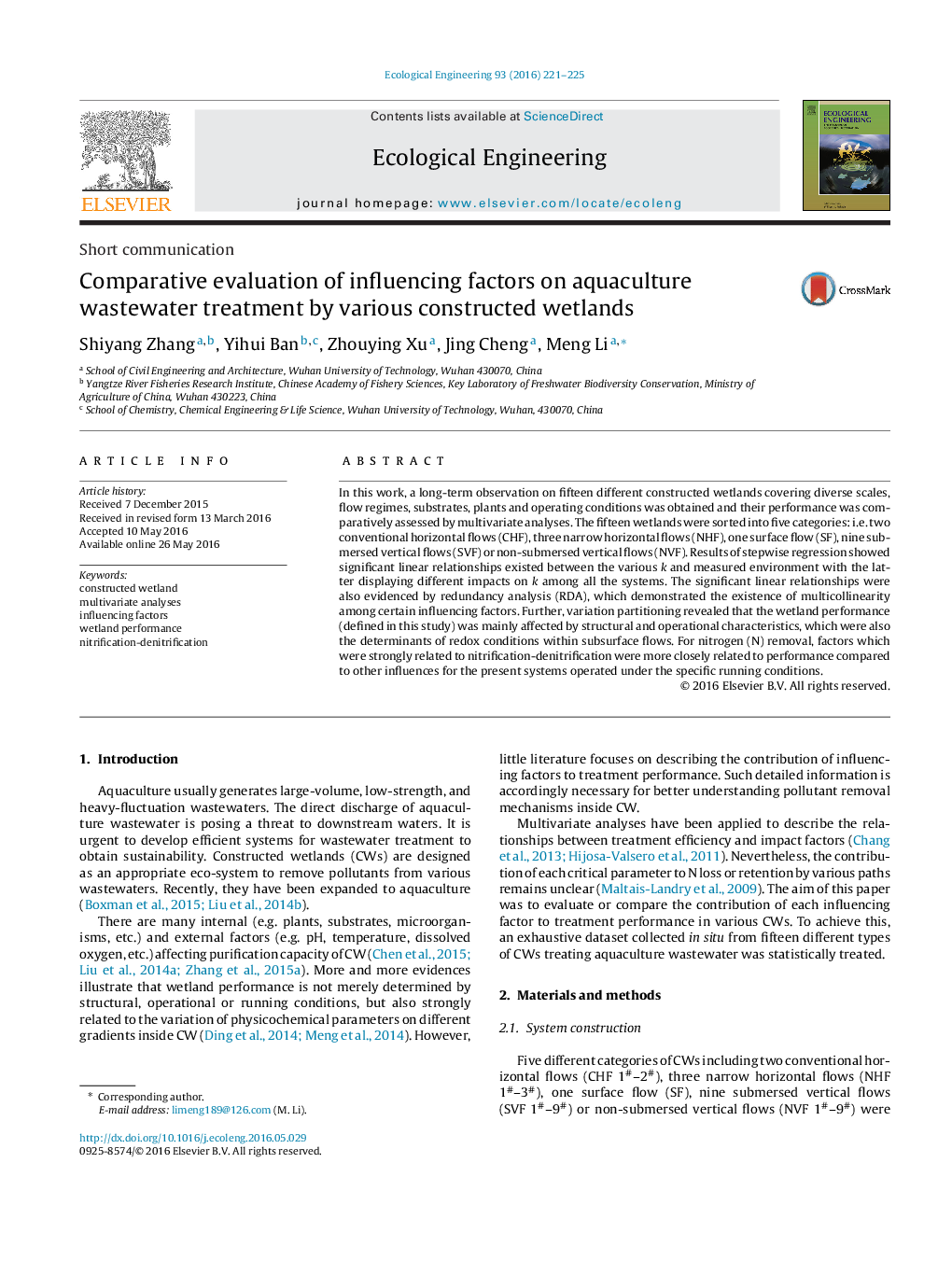| Article ID | Journal | Published Year | Pages | File Type |
|---|---|---|---|---|
| 4388731 | Ecological Engineering | 2016 | 5 Pages |
•The various k strongly related to the measured environment.•Structural and operational characteristics significantly affected treatment performance.•Nitrification-denitrification factors were more influential on N removal.
In this work, a long-term observation on fifteen different constructed wetlands covering diverse scales, flow regimes, substrates, plants and operating conditions was obtained and their performance was comparatively assessed by multivariate analyses. The fifteen wetlands were sorted into five categories: i.e. two conventional horizontal flows (CHF), three narrow horizontal flows (NHF), one surface flow (SF), nine submersed vertical flows (SVF) or non-submersed vertical flows (NVF). Results of stepwise regression showed significant linear relationships existed between the various k and measured environment with the latter displaying different impacts on k among all the systems. The significant linear relationships were also evidenced by redundancy analysis (RDA), which demonstrated the existence of multicollinearity among certain influencing factors. Further, variation partitioning revealed that the wetland performance (defined in this study) was mainly affected by structural and operational characteristics, which were also the determinants of redox conditions within subsurface flows. For nitrogen (N) removal, factors which were strongly related to nitrification-denitrification were more closely related to performance compared to other influences for the present systems operated under the specific running conditions.
